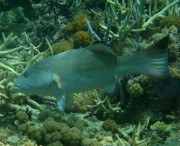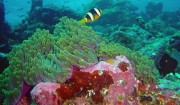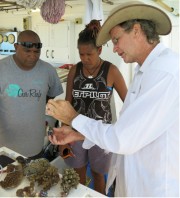AIMS Reef Monitoring
The AIMS Long Term Monitoring Program (LTMP) has been surveying the health of hundreds reefs in the Great Barrier Reef annually since 1985. This represents the longest continuous temporal record of change in reef communities over such a large scale.
See Reef Monitoring for more information.
The AIMS LTMP reef survey data (high level classifications) is now available publically.
Articles

No-take marine reserves (NTMRs) are widely advocated for conserving exploited fish stocks and biodiversity. Research investigating the effects of the 2004 rezoning of the Great Barrier Reef Marine Park (Emslie et al, 2015) showed that expanding NTMR networks had clear benefits for fishery target, but not non-target, species. A cyclone caused widespread degradation, but target species biomass was retained within NTMRs, with greater recovery potential.
The crown-of-thorns seastar, Acanthaster planci, is a predator of corals and along with cyclones is the major cause of coral mortality on the Great Barrier Reef (GBR) 1 . The GBR is currently experiencing the fourth wave of crown-of-thorns infestations since the 1960’s.
Corals are the back bones of coral reef ecosystems. They produce calcium carbonate skeletons that build coral reef framework. Reef fishes and many other inhabitants depend upon corals for shelter and food. Coral populations are dynamic, cycling through phases of disturbance and recovery. Many types of disturbance kill corals including cyclones, Crown-of-Thorns Starfish (COTS) outbreaks, bleaching and disease.

Preserving biodiversity is an essential component of most conservation and environmental management strategies but what actually is biodiversity and why is it important? Put simply, biodiversity is the incredible variety of life that surrounds us and the most fundamentally important reason for its preservation is that critical reductions in biodiversity can lead to the degradation of ecosystems and reduced quality of life for all inhabitants, including humans.

During trips to Torres Strait in collaboration with TSRA in 2013 and 2014 coral skeletons were collected under a permit issued by the Commonwealth of Australia under the Torres Strait Fisheries Act 1998. The permit specified the collection of small pieces of the coral skeleton for identification purposes.




